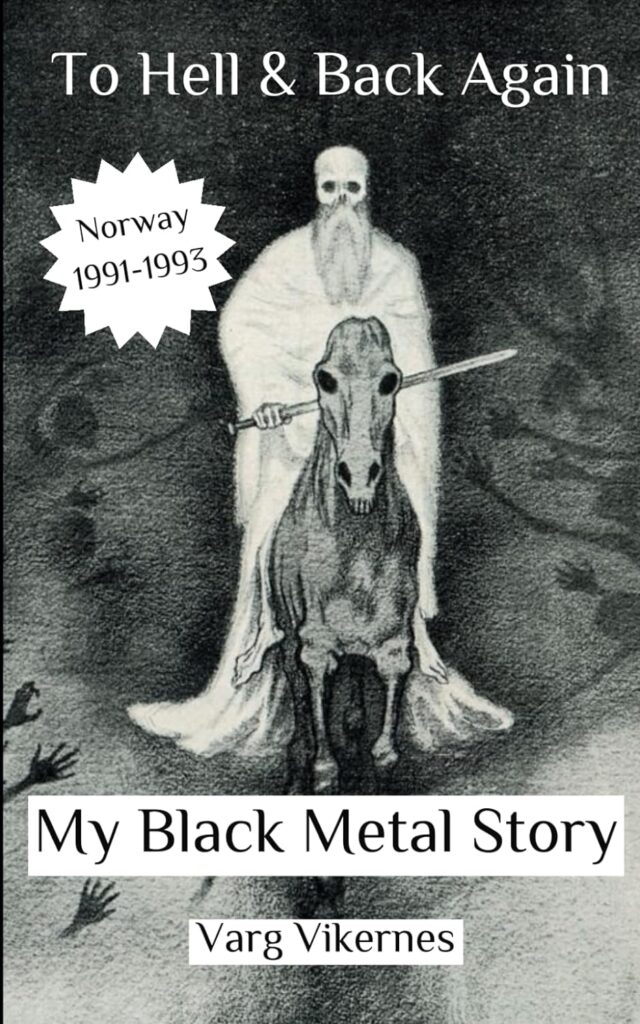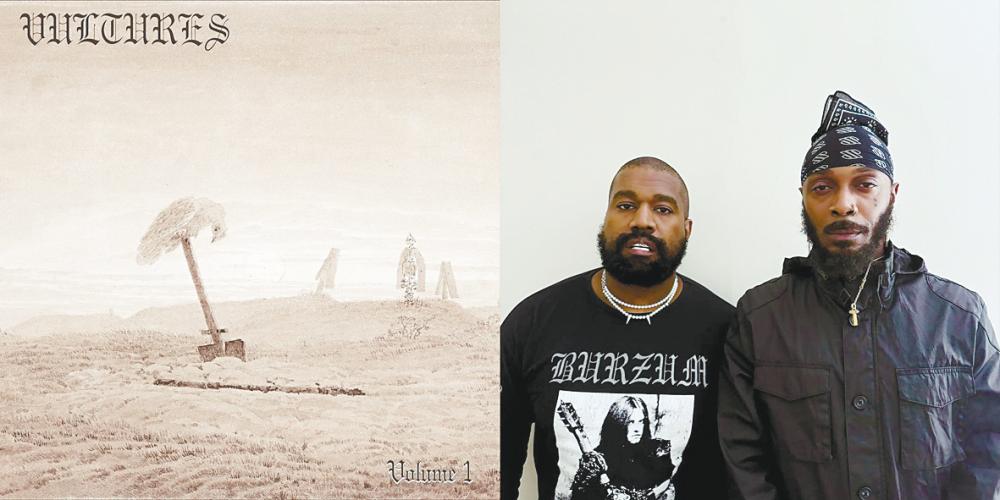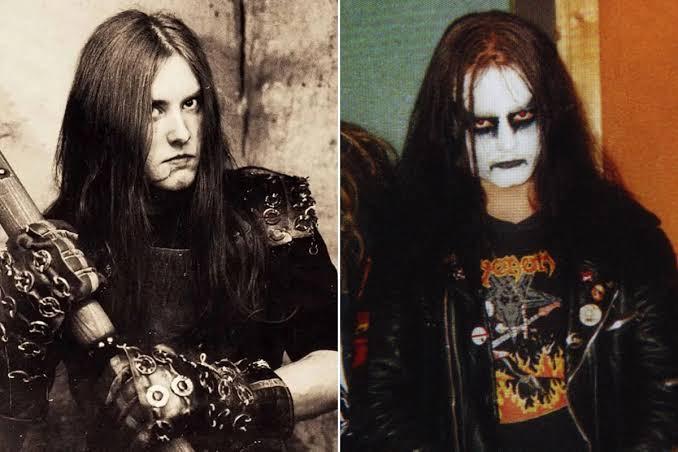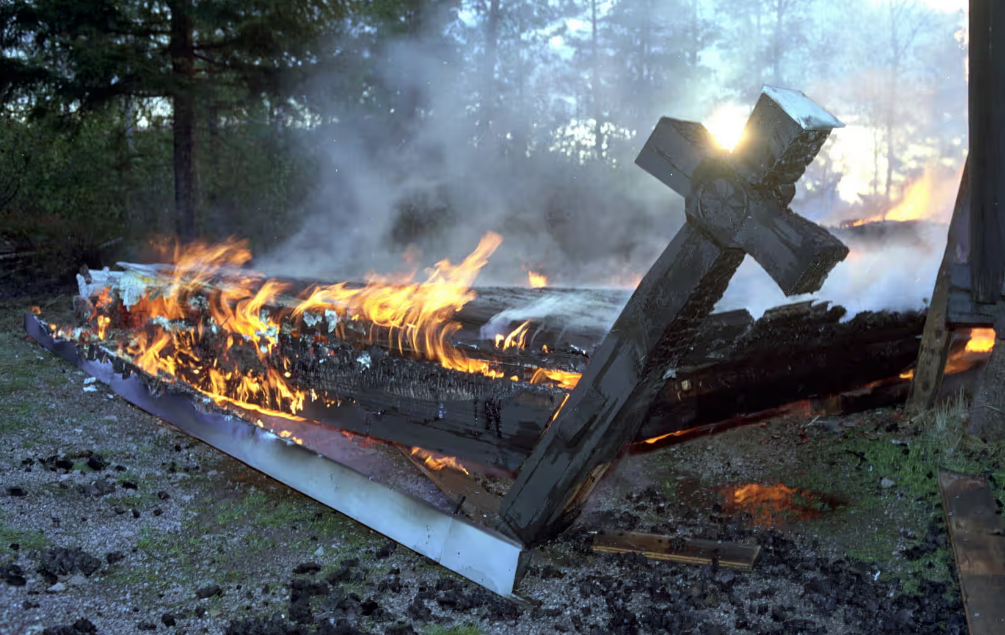To Hell & Back Again: Part 1 – My Black Metal Story
Reviewed By: Jason Deaville
Review Score: 9

Love him or hate him, Burzum‘s Varg Vikernes is certainly one of the most relevant and iconic figures in the history of black metal. To dismiss the man’s contributions to the sub-genre is akin to turning one’s back on historical truth. Sure, you don’t have to approve of his criminal actions or worldview, but this does not negate the fact that, without him, black metal would not be what it is today (much to Varg’s chagrin, who does not look fondly on the development of black metal since those early days when he was invovled).
Even thirty-years on, Varg’s legacy and influence can be heard in contemporary black metal. In fact, his influence goes beyond the realm of metal, with hip hop artists such as Kanye West paying homage to Varg with album covers (the cover art of Kanye’s most recent album, Vultures, visually recalls early Burzum albums and uses the same font) and merchandise that has an unmistakeable similarity to early Norwegian black metal aesthetics. In fact, Varg recently addressed this, stating that “I think it shows courage to publicly wear a Burzum shirt, like he [Kanye] has done. You risk the wrath (including boycott) of an entire music industry, completely under the control of… ‘a certain group.’ So kudos to him for that.”

Over the last several years, Varg has been quite vocal about his time spent in the inner circle of Norwegian black metal, taking to Youtube and various other social platforms to espouse his thoughts (at the risk of being cancelled and having his channels removed, which was the case with his official YouTube channel). The man does not mince words when it comes to his opinions on those early days and his peers of that time. More recently, Varg spoke with disdain upon the release of the Hollywood version of those early days (chronicled in the big-budget movie Lords Of Chaos). He clarified that the “whole movie was just made up” and that the filmmakers “completely ignored facts” in an effort to “character murder” him.
So, as you can clearly surmise, the story that has been told by mainstream media might, in fact, not be the whole story. Of course, there are two sides to every story, and Varg’s story has never really been told in any length (apart from the odd diatribe and blog post by Varg). To Hell & Back Again: Part 1 – My Black Metal Story serves to rectify that.
Presented in a 150-page paperback book entirely authored by Varg, the book provides a unique insider perspective on the birth and evolution of the Norwegian Black Metal movement, and explores the shocking stories of the scene’s notorious musicians, church burnings, and the intense ideological struggles that defined this subculture.
So, what are you in for if you pick this book up? Well, let’s find out…
The book starts with a foreword from Varg that immediately clarifies his intention with the book. He stresses the fact that he no longer has any attachement to the Nordic black metal scene, and that everything contained within the book is from an unbiased position from a man who has no ulterior motives. He states that most other books or material written about the topic serve an agenda, as they are often written or recounted by those still a part of that scene. You can take all this with a grain of salt, but I suppose it is possible that Varg is being genuine. He even mentions that he too was at fault and a big part of the problem, so he does not shy away from personal responsiblity as it relates to his transgressions.
After a quick setup of how the scene came to be in Norway, Varg then goes on to recount the murder of Euronymous through the next thirty pages, detail by gory detail. If you are familiar with his side of the story, this version of events will not be anything new. Varg does go into a bit more detail about the investigation, and how the two witnesses (Snorre Ruch and a second, unnamed person) were manipulated by the investigators. I won’t spoil it with any details, but Varg’s version of events into the investigation certainly raise questions, if true.

With the details of the murder and subsequent investigation laid out, Varg then discusses, at length, the proceeding trial. It should come as no surprise that Varg’s version of the criminal trial, as outlined in the book, is quite at odds with the formal account. He goes into detail about the corruption on the part of Norway (which Varg describes as “some sort of illogical combination of a Christian Communist Capitalist Monarchy) and its judicial system, as well as the culpability of the Norwegian mainstream media for perpertrating deception and untruths. Some of the details are quite shocking and, if true, certainly makes one question the capabilty of the Norwegian judicial system. The entirety of this section of the book plays out like a riveting court drama. In the end, as we all know, Varg was found guilty of first-degree murder and sentenced to twenty-one years in prison. He does give us an explanation as to the infamous picture of him smiling while being read his fate.

Varg then dedicates several pages explaining the sordid tale of all the church burnings (of, which, he was found guilty of four counts, and not guilty on one count). It’s here that Varg espouses on many of the personalites and bands in the Norwegian black metal scene at the time, as many of them (including Bard Faust and Samoth of Emperor) confessed to burning churches, while also implicating Varg. Let’s just say that his opinion of many of his peers is not favourable. On a more positive note, he does spend some time talking about the bands and musicians in the scene that he respected, and still has a fondness for all these years later (again, I will not spoil who that is here). Most interestingly, Varg describes the coordinated effort by the Norwegian Black Metal Inner circle to burn down churches on the 1199th anniversary of the Viking attack on Lindisfarne Monastery in England. If anything, this recounting of that day gives readers some clear insight on the hierarchy and organizational structure (or lackthereof) of those in the scene. Varg also touches on some of the political motivations behind burning down churches, apart from the “are you true” indocrination propagated by Euronymous.

Chapter 12 focuses entirely on Varg’s worldview. He goes into detail about topics such as racism, immigration, anti-Christianity, satanism, paganism, war, judaism, and Norwegian politics. He talks at length about the common sentiment among most Norwegians as it relates to these topics. Whether you agree with his views or not, there is some surprising and compelling insight here, both personally and culturally.
The remainder of the book mainly focuses on Burzum and the discography, with some discussion about what/what did not influence Norwegian black metal (lots of Venom, KISS, Alice Cooper, King Diamond, Mercyful Fate references). Varg also ruminates on the various bands that were part of the Nordic scene, giving his thoughts on Immortal, Emperor, Darkthrone, and Satyricon. He also spends some time discussing contemporary black metal, which, he states, is not black metal at all (rather, not what he and his peers intended “black metal” to be when the scene in Norway was birthed). From his perspective, the black metal he and his peers had a hand in shaping was twisted and contorted by mainstream media, ultimately becoming trendy, which is the antithesis of its original purpose (which was to be anti-death metal). I mean, he definitely has an argument here.
FINAL THOUGHTS
All in all, To Hell & Back Again: Part 1 – My Black Metal Story is an engaging and provocative read that provides a different and much-welcomed perspective on the people, places, and events surrounding Norwegian black metal in the early 90s. For a man who often comes across as a self-obsessed egomaniac (which Varg admits to in the book), his tales are spun with humility (with a dash of sarcasm) and are, at times, quite self-critical. It is clear that he has nothing to gain from this account, apart from getting a chance to set the record straight from his perspective. If you are hesitant in picking this up due to any moral dilemmas, just remember that there are two sides to every story. At the end of the day, we’ll never really know how much of what is contained within these pages is true. That being said, the context matters.”